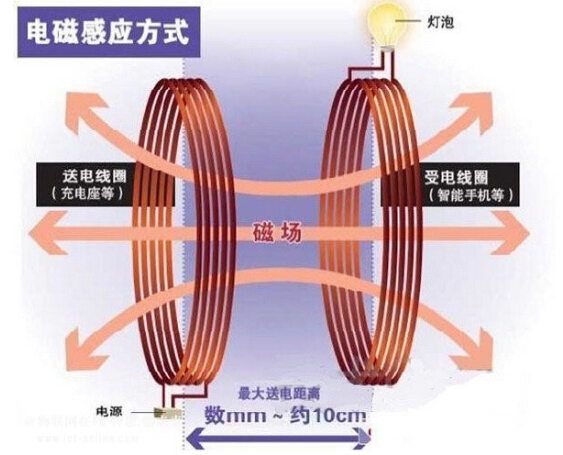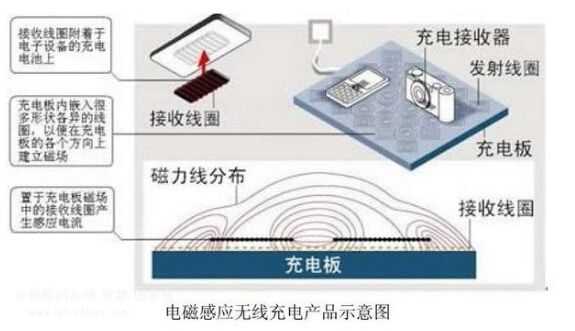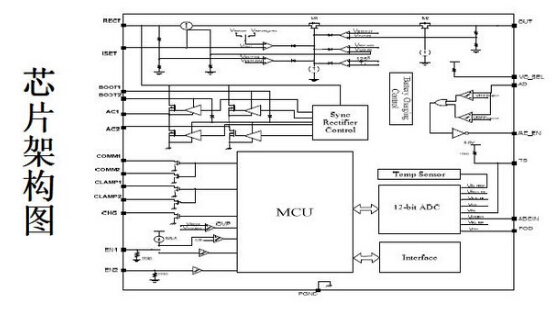I. Overview:
Wireless charging technology originates from wireless energy transmission technology. Low-power wireless charging often uses electromagnetic induction (such as Qi mode for charging a mobile phone). High-power wireless charging often uses a resonant type, and the magnetic field is transmitted between the charger and the electric device. Energy, no wire connection between the two, so the charger and the power device can be exposed without any conductive contacts.
There are four mainstream wireless charging standards: Qi standard, PMA standard, A4WP standard, and iNPOFi technology. Among them, Qi is the world's first standardization organization to promote wireless charging technology, the Wireless Charging Standard (WPC), which has two features: convenience and versatility. First of all, different brands of products, as long as there is a Qi logo, Qi wireless charger can be used to charge. Secondly, it has overcome the technological bottlenecks of the “universality†of wireless charging. In the near future, mobile phones, cameras, computers and other products can be charged with Qi wireless chargers, which will provide possibilities for large-scale wireless charging applications.

The mainstream wireless charging technology in the market mainly uses three methods, electromagnetic induction, radio waves, and resonance. Qi uses the most mainstream electromagnetic induction technology. In terms of technology applications, Chinese companies have already stood at the forefront of the wireless charging industry. It is reported that Qi's application products in China are mainly mobile phones and portable digital products.

Second, the functional description and block diagram:
Typical battery-inductive wireless charging block diagram:

Chip architecture diagram: (wireless charging receiver + charging management circuit)


Functional description:
1, in line with WPCQi1.1 standard, w/FOD
2, high integration, built-in high efficiency synchronous rectification, battery charge management 3, built-in MCU, to ensure system flexibility 4, built-in 12bits high-precision ADC
5, the maximum charging current 400mA@5V
6, single pin 4.2V, 4.35V battery voltage setting 7, current reverse protection, static power <0.1uA
8, 20V voltage input tolerance 9, built-in over-current, over-voltage, over-temperature protection
Wireless charging technology originates from wireless energy transmission technology. Low-power wireless charging often uses electromagnetic induction (such as Qi mode for charging a mobile phone). High-power wireless charging often uses a resonant type, and the magnetic field is transmitted between the charger and the electric device. Energy, no wire connection between the two, so the charger and the power device can be exposed without any conductive contacts.
There are four mainstream wireless charging standards: Qi standard, PMA standard, A4WP standard, and iNPOFi technology. Among them, Qi is the world's first standardization organization to promote wireless charging technology, the Wireless Charging Standard (WPC), which has two features: convenience and versatility. First of all, different brands of products, as long as there is a Qi logo, Qi wireless charger can be used to charge. Secondly, it has overcome the technological bottlenecks of the “universality†of wireless charging. In the near future, mobile phones, cameras, computers and other products can be charged with Qi wireless chargers, which will provide possibilities for large-scale wireless charging applications.

The mainstream wireless charging technology in the market mainly uses three methods, electromagnetic induction, radio waves, and resonance. Qi uses the most mainstream electromagnetic induction technology. In terms of technology applications, Chinese companies have already stood at the forefront of the wireless charging industry. It is reported that Qi's application products in China are mainly mobile phones and portable digital products.

Second, the functional description and block diagram:
Typical battery-inductive wireless charging block diagram:

Chip architecture diagram: (wireless charging receiver + charging management circuit)


Functional description:
1, in line with WPCQi1.1 standard, w/FOD
2, high integration, built-in high efficiency synchronous rectification, battery charge management 3, built-in MCU, to ensure system flexibility 4, built-in 12bits high-precision ADC
5, the maximum charging current 400mA@5V
6, single pin 4.2V, 4.35V battery voltage setting 7, current reverse protection, static power <0.1uA
8, 20V voltage input tolerance 9, built-in over-current, over-voltage, over-temperature protection
We are putting most of our resource and effort into Ratchet Straps and their accessories.
Besides ratchet buckle,straps,what else is missing?
Yes,End Fittings,so here are what we strongly suggest-Close Rave Hooks.
This one is also quite special,that's what makes them more practical in certain enviroments.
And yet,here are also two different sizes for you-2'' with 1,600kgs/3,525Lbs breaking strength and 3'' hook with 8,000kgs/17,600Lbs capacity,remarkable,right?
Please source these accordingly or consult us for professional advices.
Close Rave Hooks
Close Rave Hooks,Zinc Plated Closed Rave Hook,Stength Wire Rave Hook,Stainless Steel Rave Hooks
WINNERLIFTING(H.K.)INT'L TRADING LIMITED. , https://www.ratchetstrap.de